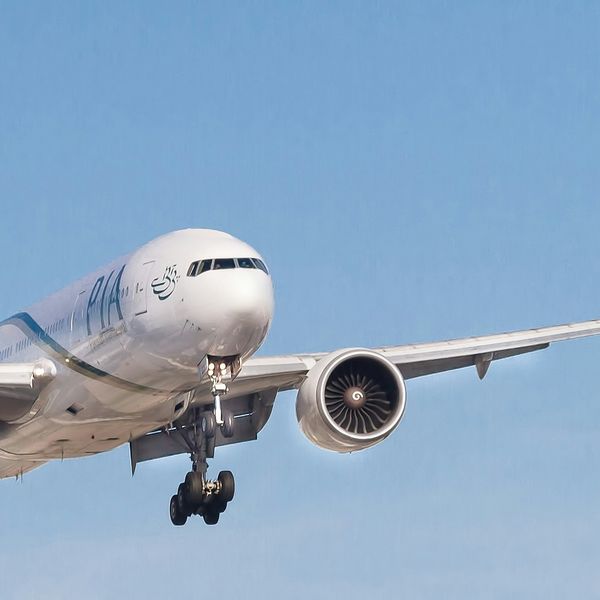Rao Aamir

A shopkeeper poses at his shop in Karachi's Empress Market
Shutterstock
Inflation in Pakistan has been easing consistently in recent months and is set to continue its downward trajectory in October on the back of a high base effect. Nukta research suggests that inflation in this month will be recorded at 6.5% compared to October 2023.
Consequently, the real interest rate — the nominal interest rate (decided by the central bank) minus the inflation rate — would increase to 11%, creating significant room for the State Bank of Pakistan to aggressively slash interest rates further.
However, inflation is expected to be 0.6% higher compared to September, primarily led by higher food prices and a higher housing index.
The Pakistan Bureau of Statistics (PBS) releases weekly inflation data every Friday. According to the latest report, inflation in the first week of October rose by 0.4% week-on-week (WoW) and 13.2% compared to the same week last year. This increase was primarily driven by higher food prices, with tomatoes up by 18.5%, garlic by 2.5%, onions by 5.9%, and chicken and wheat flour prices rising by 3.7% and 3.6%, respectively.
Why will there be a monthly increase?
While inflation this month will decrease compared to October 2023, it is expected to increase compared to September.
One of the primary reasons for this is the removal of a subsidy on electricity tariffs that was in effect in August and September for consumers using up to 500 units in Punjab and Islamabad. However, starting in October, these consumers will also have to pay higher electricity rates. This tariff hike for the category is expected to raise inflation by 28 basis points.
However, in July, a negative Fuel Charges Adjustment (FCA) of PKR 0.37 per unit was approved by the authorities and implemented in September. Additionally, for August, another negative FCA of PKR 0.58 per unit has been requested. This FCA for August is set to be implemented in October, if approved.
The housing index is also set to rise in October. The rent index is adjusted every three months, with the last increase occurring in June, and the next adjustment due in October.
October inflation breakdown
The food index is expected to increase by 1.0% against last month, fueled by a 2.8% rise in wheat flour prices, a 5.7% increase in chicken prices, a 7.6% surge in onion prices, a 24.4% jump in tomato prices, and a 3.4% rise in garlic prices. In contrast, banana prices are set to decrease by 3.7%, while pulse mash and pulse masoor prices fell by 2.6% and 1.4%, respectively.
The housing index is projected to rise by 1.2% compared to September due to increases in house rents and electricity tariffs for consumers using up to 200 units.
Moreover, the transport index is expected to decline by 2.6% in October as a result of falling petrol and diesel prices.
Potential risks
The growing uncertainty in the Middle East could lead to higher oil prices, which may, in turn, drive up local prices in Pakistan. For every $5 per barrel increase in international oil prices, inflation in Pakistan is expected to rise by 22 basis points.
Moreover, the government is expected to miss its Petroleum Development Levy (PDL) collection target of PKR 1,281 billion for fiscal year 2024-25 due to a decline in petroleum product sales. It is highly likely that the PDL may be increased from PKR 60 per liter to PKR 70 per liter. This PKR 10 per liter hike in the PDL is projected to raise inflation by 23 basis points.
Read more: What Pakistan needs to do to meet its petroleum levy collection target
Separately, Pakistan's electricity generation in the first two months of the current fiscal year was lower than the target, which has resulted in a revenue shortfall. This is typically recovered from consumers through Quarterly Tariff Adjustments (QTA). An estimated revenue shortfall of around PKR 123 billion is anticipated, which will be passed on to consumers between December 2024 and February 2025.
Based on the expected generation for this period, Nukta projects a QTA of PKR 5.16 per unit to be applied from December 2024 to February 2025. Nukta's calculations indicate that this would lead to a 60 basis point increase in inflation.
What's behind easing inflation in Sept?
To recall, September saw Pakistan recording its lowest inflation rate in 44 months at 6.9%. This decline was driven by deflation in food prices, which fell by 0.6% compared to the same month last year, primarily due to a significant 38% drop in wheat flour prices. The price of a 20 kg bag of wheat flour fell to PKR 1,745 from PKR 2,820 a year earlier.
Additionally, the transport index saw a 7.3% yearly decline, as petrol and diesel prices dropped by 25% and 24%, respectively. These prices had peaked in September 2023 at PKR 331 per liter for petrol and PKR 329 per liter for diesel.
Despite having the capacity to raise the PDL, the government opted to keep it steady at PKR 60 per liter. The food and transport indices together account for 40.4% of the National Consumer Price Index (CPI) basket, which is why inflation eased to a nearly four-year low.
The impact
Pakistani brokerage houses and international ratings agencies expect the State Bank of Pakistan to cut the interest rate to around 15% from the current 17.5% on the back of easing inflation and a widening real interest rate.
The SBP's Monetary Policy Committee is set to meet on Nov 4 with expectations high of a 150-200 basis points cut, taking the year's total to a record 800bps cut.







Comments
See what people are discussing